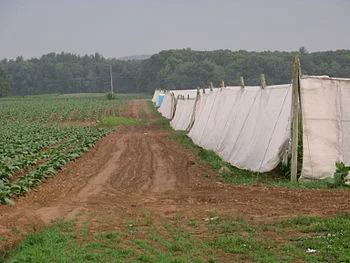
Changing face of farming in Nutmeg State
Adapted from Robert Whitcomb's "Digital Diary,'' in GoLocal24.com:
You don’t tend to think of New England as particularly agricultural, especially southern New England. But consider that in heavily urban, suburban and exurban Connecticut, whose rich southwest corner is part of metro New York, agriculture generates up to $4 billiona year in revenue. And the crops are changing: Making wine has become important, as has aquaculture (mostly shellfish) while tobacco, traditional commercial fishing and a logging have declined. (I can remember the vast shade tobacco (for cigars) farms in the Connecticut Valley. See the movie Parrish.) And in parts of the state there’s been a resurgence of small-scale farming selling fruit and vegetables, often marketed as “organic’’ (a claim often difficult to verify) sold in season at the sort of roadside stands that I remember used to be along small roads leading to Cape Cod.
With so many big malls and their vast parking lots closing, it’s pleasant to think that some of this space might be profitably put back into agriculture to serve the local market, asmuch of this land was used 200 years ago.
Might climate warming extend the growing season a lot for some crops?
University of Connecticut researchers wrote in a recent report:
“The agricultural industry in Connecticut appears to be restructuring into new market segments where innovation, diversity and economic viability are key. This may be a consequence of external factors such as competition from other regions and countries as well as natural shocks like climate change.’’

